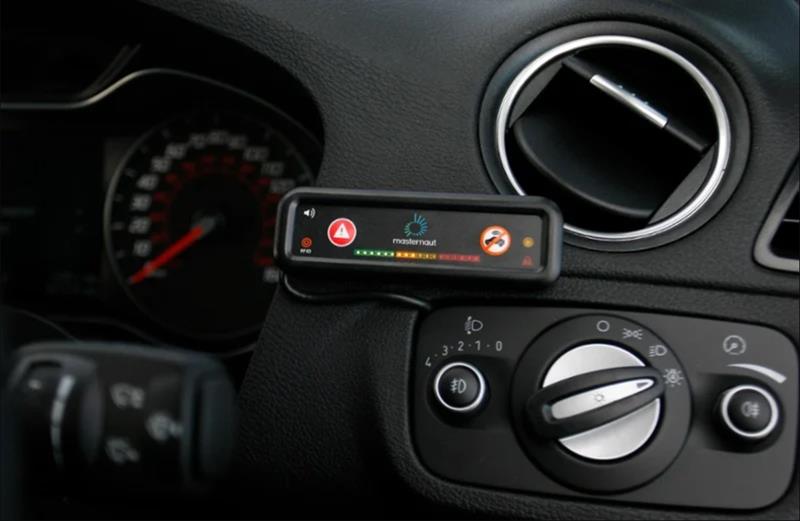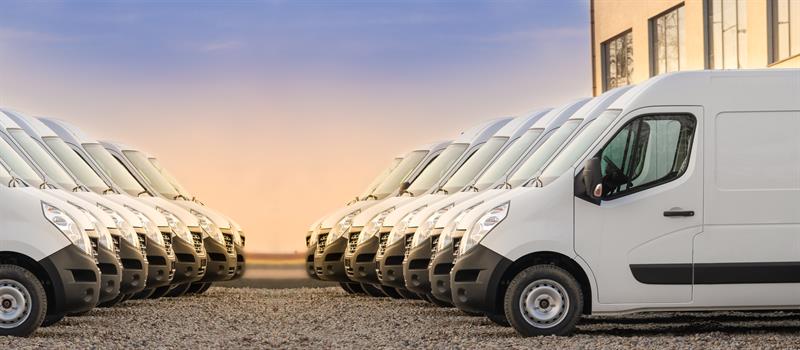While it might not be at the forefront of your mind, these vehicles play a crucial role in so many aspects of our daily life, from delivering food to supermarkets and delivering goods ordered online to our homes, to getting engineers from one job to another throughout the day.
Optimising productivity for a commercial fleet is vital and fleet management services currently play a major role in this along with answering other questions associated with running a fleet. While data analysis and vehicle tracking are currently in use, does the future of commercial fleets lie in platooning?
While truck platooning is expected to make considerable strides in the coming few years, the technology of automated linking between vehicles still has a long way to go before becoming a commercial reality.
So where are we today?
Data analysis
At present, fleet managers, who are responsible for the day-to-day running and operating of commercial fleets, place a great deal of importance on data analysis.
Thanks to connected vehicle technology and telematics boxes, installed in commercial vehicles, fleet managers have access to a huge amount of highly useful data. One of the key areas this data can help is with cost control and more specifically fuel management. This is an area of real importance for businesses operating commercial fleets, as the cost of fuel can account for a significant proportion of the running costs for a commercial vehicle.
Being able to see the fuel usage statistics for each vehicle within a fleet is extremely useful. Fleet managers can work out where savings can be made and by which drivers. However, there are a number of other areas where data analysis can result in financial savings for a business operating a commercial fleet.
Some businesses may be operating a larger than necessary commercial fleet, where the number of vehicles is higher than required to complete
the work. Data analysis can highlight which vehicles may be surplus to requirement and by reassigning work to other vehicles within a fleet and implementing more efficient routes, a lower number of vehicles can achieve the same levels of productivity.
If the time does come to expand a fleet, data already collected from the existing fleet can inform the decision on if buying or renting additional vehicles would be more cost effective.
Choosing the right vehicles in this situation is critical so, if we take fuel usage as an example, thanks to the data generated from the current fleet of vehicles, fleet managers can make an informed decision on the efficiency levels required from new vehicles and also if moving the current fleet over to newer vehicles would make financial and environmental sense.
Data analysis can also be carried out on driver behaviour. In-cab coaching devices monitor and alert drivers to dangerous and high fuel usage actions. Fleet managers and drivers can clearly see how their performance compares to others and specific aspects of a driver’s behaviour, such as harsh acceleration or excessive idling, can be analysed and training can be implemented to correct this.
Overall, analysis of data produced by commercial vehicles can have a positive impact on a variety of areas when it comes to running a commercial fleet.

Tracking
Vehicle tracking technology allows fleet managers to see a far more detailed picture of how their vehicles are operating every day. Fleet management solutions, including tracking systems, can easily be installed. Fleet management solutions and GPS tracking features can record the exact routes that each vehicle within a fleet takes. By analysing these routes, changes can be made which can lead to both businesses and customer service improvements.
Seeing areas where vehicles have been stuck in traffic or taken a route which took longer than it should have, can be highlighted and avoided in future route planning. This is important for businesses as it can allow for increased productivity, as the quicker vehicles can get from one point to another, the more customers they can reach each day.
From a customer service point of view a business which is using vehicle tracking is able to not only serve more customers each day, therefore reducing wait times, but also provide location updates. Being told an estimated time of arrival for a delivery or engineer coming to your home or business can be extremely frustrating. Being able to provide a more accurate arrival time, and also having the ability to update this should circumstances change during the day and inform customers about this change is vital to good customer service.
Platooning
Turning to platooning, it has long been held up as part of the future of commercial vehicle transportation.
In simple terms, this is the process of linking vehicles together via technology and controlling them semi-autonomously. By doing this, theoretically, vehicles can travel closer together at higher speeds on the road by using V2V communications, radar-based active braking and vehicle control algorithms.
Testing is being undertaken both in Europe and in the US as the technology is refined and the industry discusses introducing news standards and regulations.
Field testing has been looking at the viability of the concept among different commercial vehicle brands, with the assessment of fuel economy, system robustness and customer experience.
So, what are the benefits of this? By allowing commercial vehicles to travel closer together, they can improve their fuel efficiency and also improve traffic flow.
The amount of drag a vehicle is subjected to can have a large impact on how efficient it is. With commercial vehicles often being large boxy shapes, which are not very aerodynamic, being able to have them travel closer together in a slipstream would theoretically reduce drag and improve fuel efficiency.

Critically, platooning does not involve removing the driver from the vehicle, but simply allowing vehicles within a platoon to be controlled by the lead vehicle. Maintaining a safe distance between the vehicles in a platoon, however, is vital for safety. Not only for the vehicles in a platoon but also other road users.
The acceleration and braking systems are automated, with driver controls linked with the truck, GPS and short-range communications.
When it comes to handling other vehicles on the roads, especially those that cut in between platooning trucks, sensors and controls are used that are able to dissolve the platooning or extend the distance between those vehicles being platooned.
Despite the potential benefits, there are some conflicting opinions over the effectiveness of platooning.
In January 2019 the Chairman of Daimler Trucks, Martin Daum, said that unless road and traffic conditions were perfect, then a predicted 4% improvement in fuel usage is actually closer to only 1%.
“Platooning is a lot of hassle, but we would go through that hassle if it meant a 4% fuel saving for our customers,” Daum said. “However, it’s not worth it for just 1%. While we cannot see a business case for platooning, we will keep an eye on it, in case we have missed something. If that is the case, we can always ramp it up again.”
So, if platooning is not going to deliver significant fuel saving benefits, is it worth it? It’s impossible to say that as technology develops that platooning won’t be the future of commercial fleets.
In the near future, the optimisation results which can be achieved with fleet management solutions described here, along with a move to electric vehicles seem to offer a more certain future than platooning. However, truck platooning is still evolving and being developed and expectations for the technology remain high both in terms of the technology and industry adoption.
Author details: Elodie Mescam is Digital Strategy Manager at Masternaut.













